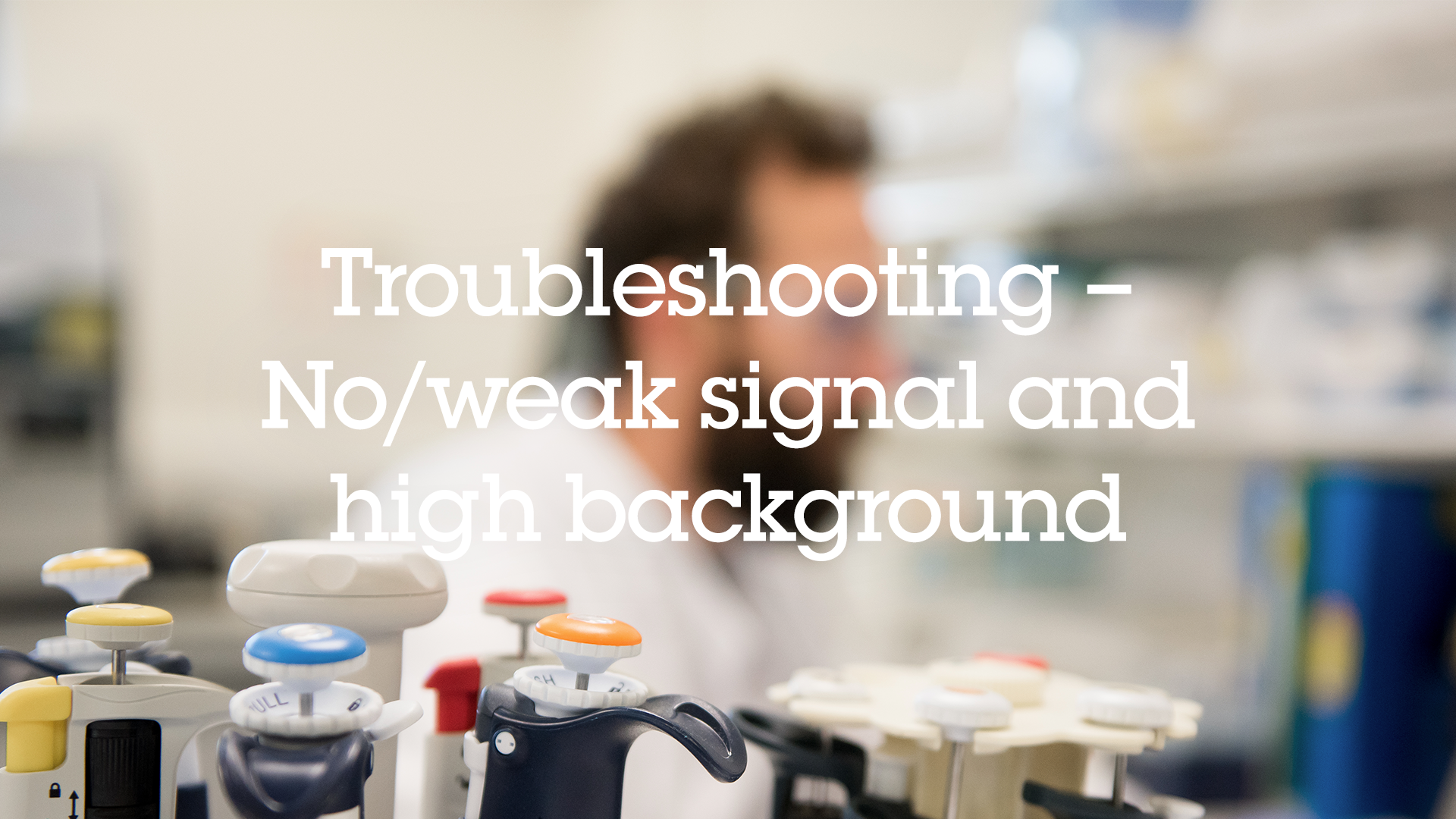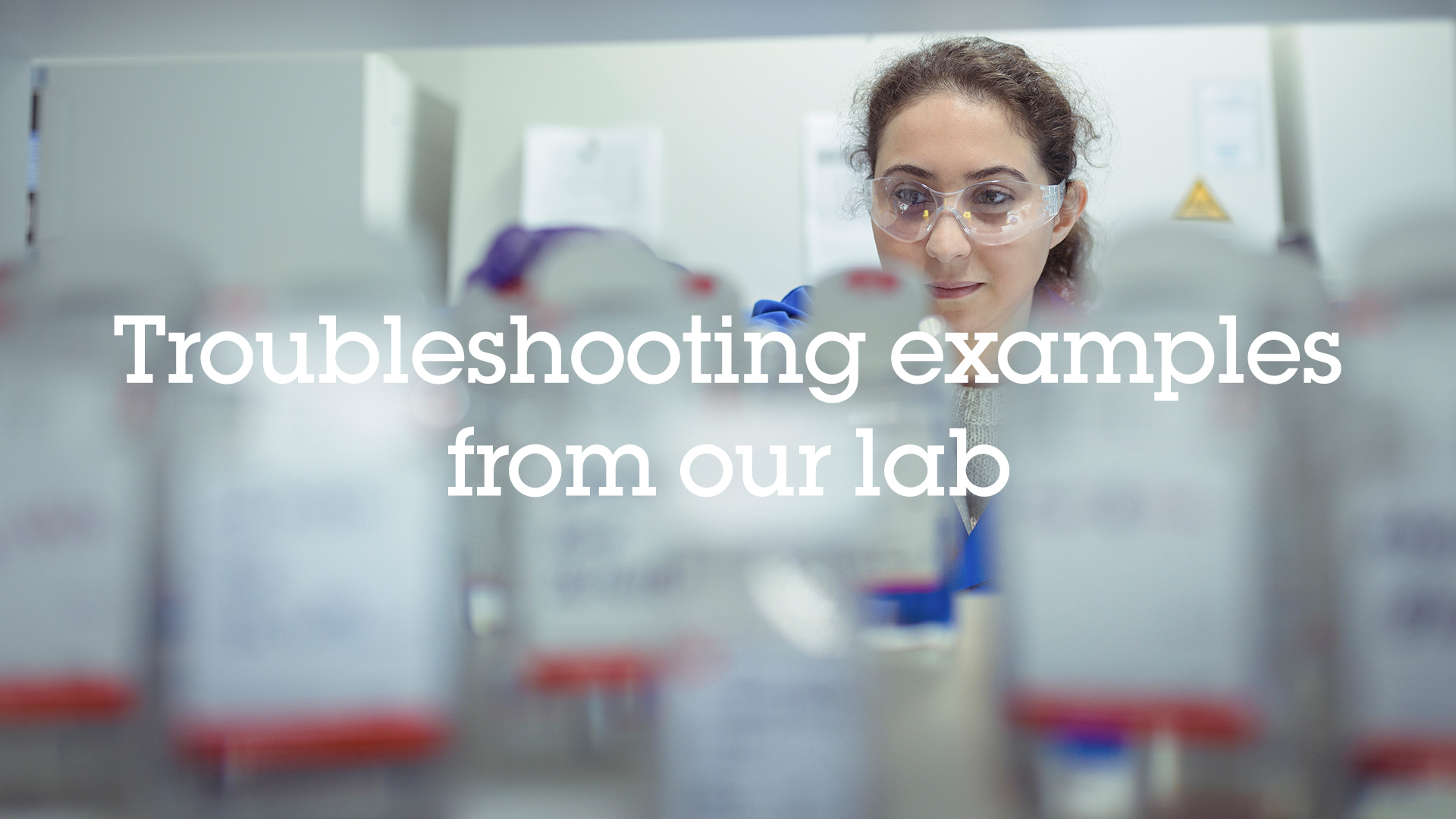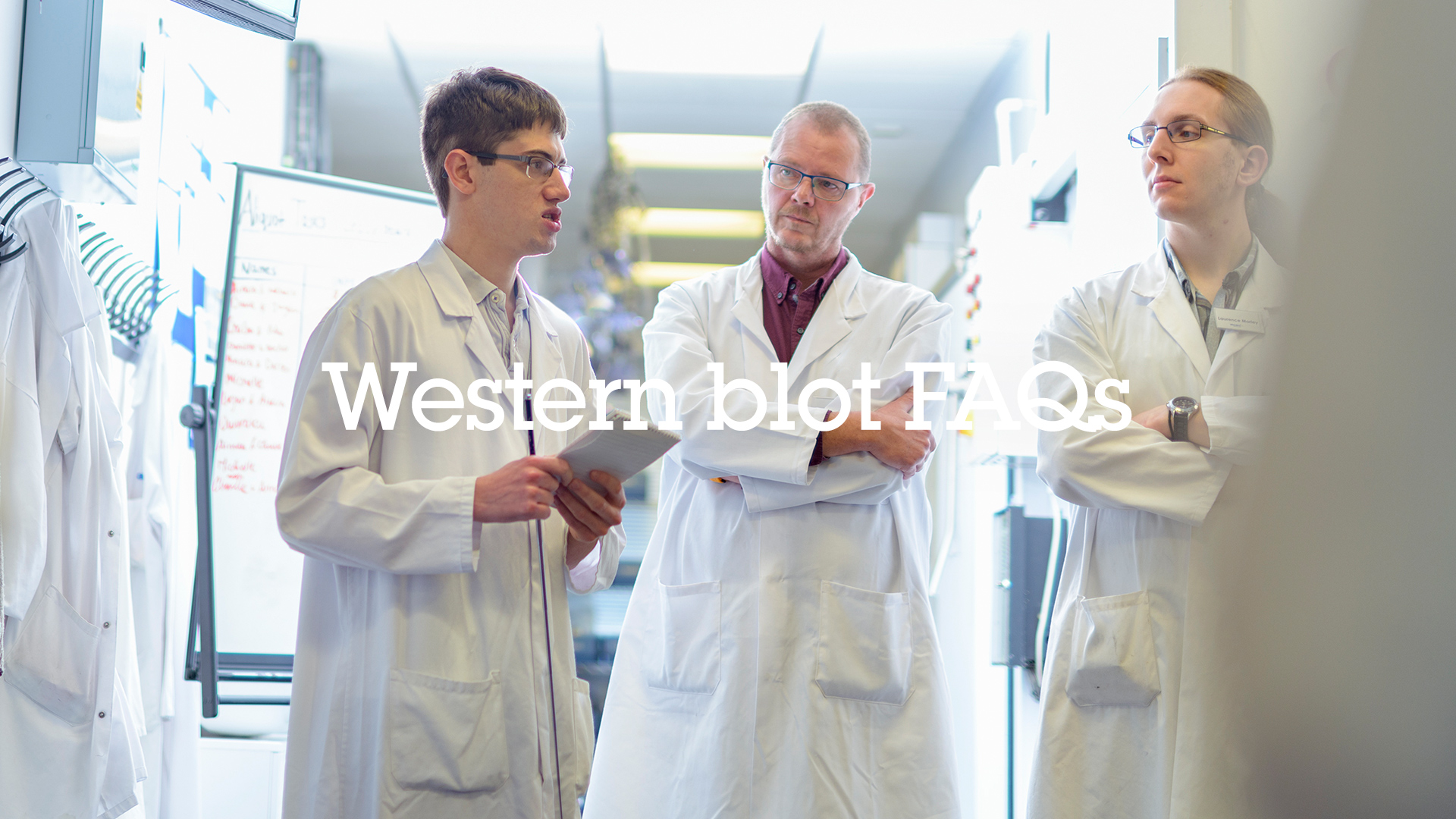
-
Western blot training
Part 3: optimization and troubleshooting
Welcome to our training series on western blot. We’ll guide you through western blot basics and essential protocols before moving on to optimization, troubleshooting, and more advanced techniques.In Part 3 of our series on western blot, we’ll show you a few troubleshooting tips and answer frequently asked questions (FAQs). We’ll also explain how to detect histones and phosphorylated proteins.
Part 3 overview3.1 Western blot troubleshooting tips
3.2 Western blot FAQs
3.3 Western blot protocol for phosphorylated proteins
3.4 Histone western blot protocol
3.1 Western blot troubleshooting tipsAll experiments and model systems are different, so it may not be enough to follow a standard protocol to get the results you are expecting. If you are having difficulties getting your western blots exactly how you want them, take a look over our troubleshooting tips. In the videos below, we cover all common causes of no signal, high background, and multiple bands.

 3.2 Western blot FAQs
3.2 Western blot FAQsNow that you’ve been through all the main western blot steps in this course, you should have a good idea of what you need to do to get results. However, if you still have some questions or uncertainties, watch our video on western blot FAQs.
In this video, we’ll tackle the most common questions including:
• How can I identify positive and negative controls for my experiments?
• Why are the western blot band sizes different to what is expected?
• How much sample should be loaded?
• Do the samples need to be reduced and denatured? 3.3 Western blot protocol for phosphorylated proteins
3.3 Western blot protocol for phosphorylated proteinsIf you’re working with post-translational modifications of proteins, such as phosphorylation, it’s essential to handle your samples with care and use the right reagents to maintain the structural integrity of your proteins. To keep the proteins in their phosphorylated state, add phosphatase inhibitors to the working stocks of your buffers and always keep samples on ice. It is also important to block the membrane in BSA and avoid using casein or milk blocking buffers. Casein is a phosphoprotein, present in milk, which causes high background signals. A starting BSA concentration of 5% w/v in TBS-T is suggested, however, the optimal concentration is antibody dependent and should be empirically determined.
Western blot protocol for phosphorylated proteins:
1. To a sample of protein solution containing 1–100 ng of the target protein (500 µg lysate), add an equal volume of 2x SDS-PAGE sample buffer. For reduced samples, the sample buffer should be supplemented with DTT or ß-mercaptoethanol. For non-reduced samples, don't add DTT or ß-mercaptoethanol.
2. Denature the proteins by heating the sample to 95°C, or boiling, for 5 min.
3. Load the sample onto an SDS-PAGE gel and run the gel under standard conditions.
4. Transfer the proteins to the membrane using semi-dry or wet transfer methods. If using PVDF, note that it is essential to activate the membranes by pre-wetting in 100% methanol for 10 seconds before transfer.
5. If required, the transfer efficiency can be determined by staining the membrane briefly (10 s) in Ponceau stain. The stain can be removed by washing in PBST or TBST. We recommend not washing blots in distilled water as this can strip off proteins in some circumstances.
6. Block the membrane with 5% w/v BSA in TBST. Incubate for 1 h at 4°C with agitation.
7. Dilute the primary antibody in TBST to the recommended dilution. We recommend incubating in a sealed bag, hybridization tube, or 50 ml Falcon tubes (~2.5 ml primary antibody/blot). Incubate overnight at 4°C with agitation.
8. Rinse the blot in TBST 3–4 times for 5 minutes each at room temperature (RT).
9. Dilute the horseradish peroxidase (HRP) labeled secondary antibody at the recommended dilution in TBST. Note that 1/5000 is usually a good working dilution although this needs to be optimized for the particular application.
10. Rinse the blot in TBST 3–4 times for 5 minutes each at RT.
11. Perform ECL Plus detection.3.4 Histone western blot protocolHistones have a very low molecular weight, usually around 10–20 kDa, and due to their small size, you need to be careful when carrying out your western blot.
Tips for successful western blotting with histones:
• Use a high-percentage gel for a clear resolution of histone proteins.
• Use a nitrocellulose membrane with a pore size of 0.2 µm to ensure the optimal capture of histone proteins.
• Using high-quality BSA in your blocking solutions is recommended over dried milk powders. However, the optimal blocking is antibody dependent and should be empirically determined.
• Always use loading control antibodies to standardize your experiments.Histone western blot protocol:
1. For each lane, prepare 0.5 µg calf thymus or acid extracted histones diluted in 1X LDS sample buffer, supplemented with 100 mM DTT. Heat the sample to 95°C for 5 min. Centrifuge the sample briefly to restore sample volume from condensation formed in the tube during heating. Please note that protein loadings derived from cellular lysates will need to be determined empirically.
2. Prepare a 10% Bis-Tris gel of 1.0 mm thickness. A higher percentage gel (15%) is recommended for a more effective resolution of histones.
3. Load the histone samples, including a pre-stained protein standard with sufficiently low molecular weight markers. Run the gel in MES SDS running buffer at 200V for 35 min. We advise not to run the dye front completely off the gel when dealing with smaller protein resolutions.
4. For protein transfer from the gel, please refer to the protocols supplied with your transfer apparatus, as these will vary depending upon the transfer method, ie semi-dry or wet blotting. Transfer times of 30–90 minutes should suffice for effective protein transfer. Nitrocellulose membranes with a pore size of 0.2 mm are recommended for optimal retention of histones.
5. Verify the successful transfer and equal loading of the histones using Ponceau staining. Dilute the Ponceau out of the membrane by adding dH2O.
6. Block the membrane for 1 hr at room temperature. We recommend using 5% BSA / 0.1% TBST (50 mM Tris-HCl, pH 7.5, 150 mM NaCl, 0.1% Tween 20) as a starting blocking buffer.
7. Cut the membrane into strips if necessary and prepare the primary antibody by diluting in your chosen blocking buffer at a dilution recommended by the antibody datasheet. If using blocking peptides, add as required (typically at 1μg/mL) and incubate on a rotating platform for 20 minutes at room temperature. Incubate the membrane with the primary antibody for 1.5 hours at room temperature or overnight at 4°C.
8. Rinse the blots briefly in 0.1% TBST and then perform two 5 minutes washes followed by two 10 minutes washes using the same buffer.
9. Incubate the membrane with the secondary antibody for 1 hr at RT, again diluted as recommended in 1% BSA / 0.1% TBST.
10. Wash the membrane in 0.1% TBST twice for 5 minutes, and twice for 10 minutes.
11. Perform ECL, ECF, or infrared detection as described by the manufacturer.
SummaryYou should now be fully equipped to tackle different western blot types. You also have a much better understanding of:
• What the most common problems in western blot are and how to troubleshoot them
• How to keep the proteins in their phosphorylated state
• How to work with histones
In Part 4, we’ll cover the fluorescent western blot.
Start Part 4 now!
